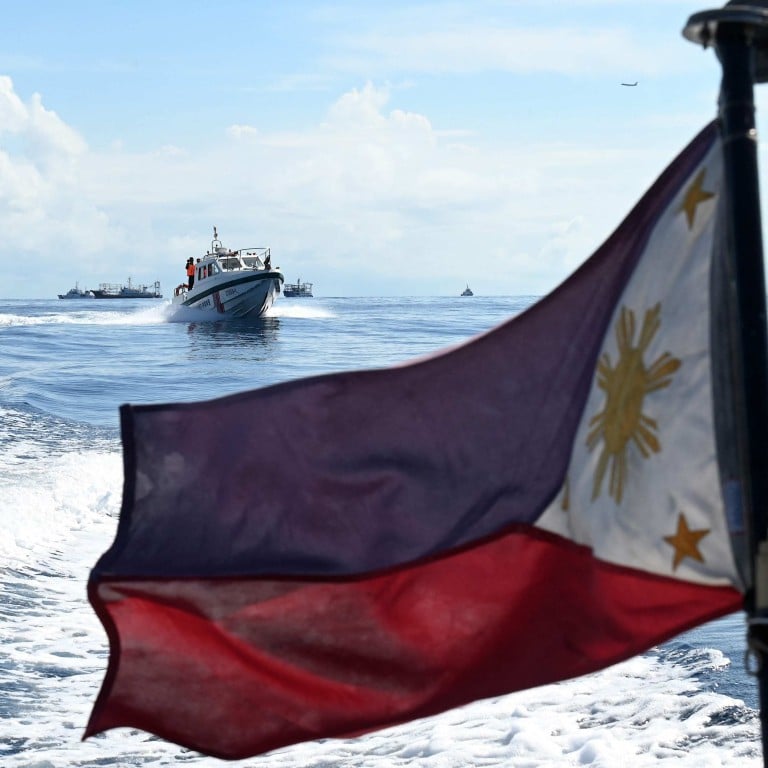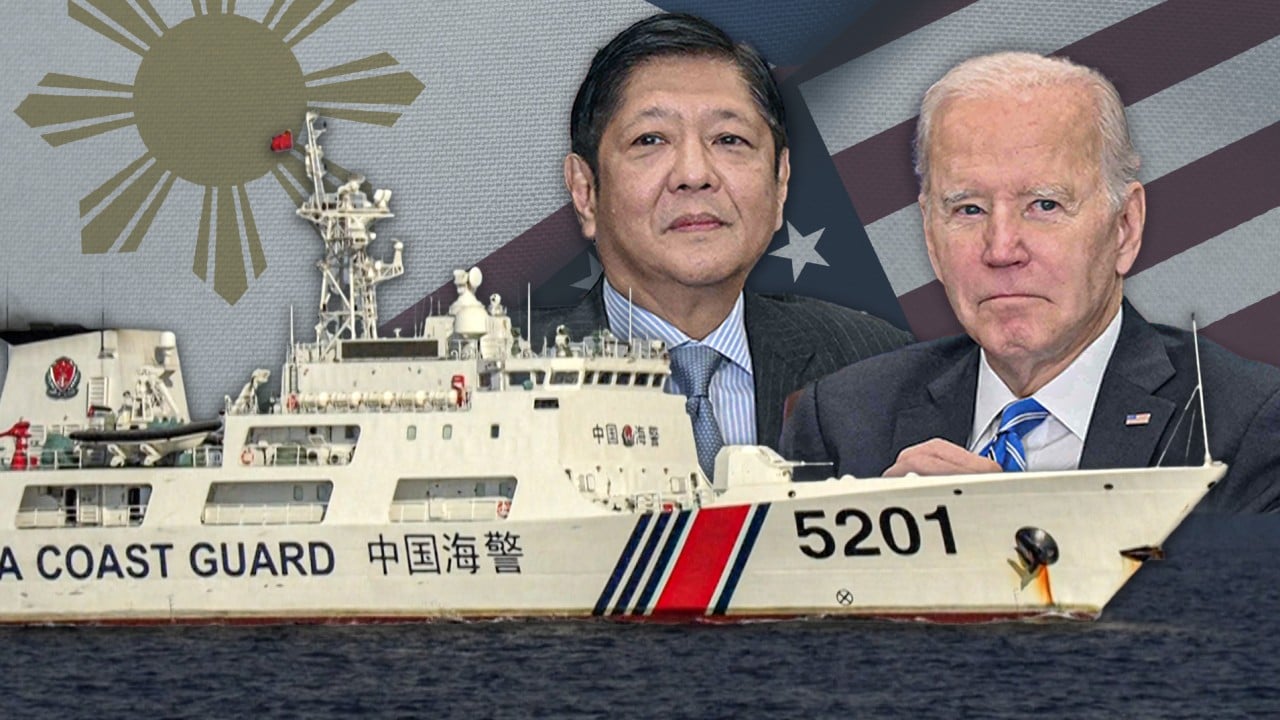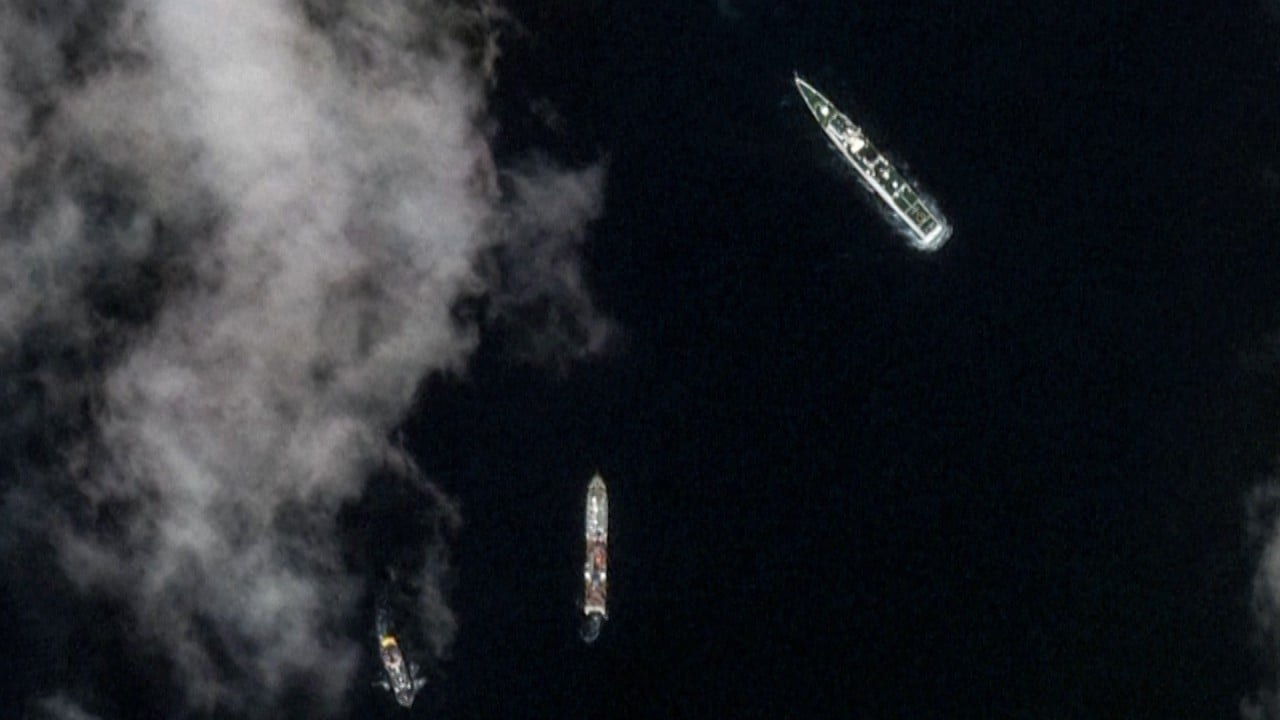
South China Sea: US, Chinese commitments to avoid open conflict are about to be tested
- Leaders of the Philippines, US and Japan will meet this week in Washington for unprecedented summit
- Hostilities have intensified over contested Second Thomas Shoal as worries grow over potential flashpoint with China
US-China ties are about to sail into choppy waters as military tensions in the South China Sea approach a boiling point.
US and Chinese military discuss potential for accidental clashes in Indo-Pacific
Aside from plans to grant the United States access to more Philippine military bases – some strategically located near Taiwan – Manila on Sunday conducted joint exercises with the US, Japan and Australia near the contested waters.
Beijing has also geared up for a possible conflict, organising several recent live-fire naval drills and on Sunday “joint naval and air combat patrols”, while accusing Manila of provocations and playing “the victimised underdog” in a bid for international sympathy.
Tensions will heat up further this week as Marcos is expected to unveil plans at a summit in Washington on Thursday with US President Joe Biden and Japanese Prime Minister Fumio Kishida to launch joint naval patrols in the South China Sea.
US seputy secretary of state Kurt Campbell last week compared the trilateral gathering to the landmark Camp David summit last year among the leaders of the US, Japan and South Korea, cementing their de facto military alliance.
How Philippines’ domestic politics can affect South China Sea tensions
Along with other US-led alliances, the latest summit was “part of a larger framework of activities … that help link the Indo-Pacific more effectively to Europe and generally just to underscore our commitment to the region as a whole”, Campbell, a top Asia expert at the Biden White House, told a think tank event last week.
As friction mounts, Biden is expected to voice “serious concern” at the summit about China’s alleged intimidation tactics and stress that the 1951 US-Philippine Mutual Defence Treaty applies to the Second Thomas Shoal dispute, according to the Financial Times.
Citing unnamed American officials, the newspaper said Biden had raised his “deep concern” about the stand-off between Beijing and Manila during a phone conversation last week with Chinese President Xi Jinping, but neither side mentioned it in their official readouts.
A statement indicating Washington’s direct involvement in China’s territorial dispute with the Philippines would no doubt be viewed by Beijing as a provocative move that threatens to further ratchet up the tension.
He told lawmakers in Washington that the US had not “faced a threat like this since World War II” and “that would put our policy decision makers in a place that would require really tough choices”.
Chinese defence ministry spokesman Wu Qian said last month that Washington was trying to instigate the Philippines to provoke China “out of its own selfish interests”. He said Beijing would not sit idle if the US attempted to use the joint defence treaty with the Philippines to threaten and coerce China.
So now comes the real test of the joint commitments by US and Chinese leaders about not seeking a new cold war or a conflict. Arguably, it is not really about how often leaders from the rival powers meet or what they promise to each other, but rather if and how they plan to honour their own words.
Fortunately, both Beijing and Washington appear to be on high alert about the danger of a looming crisis in the South China Sea.
For the first time in nearly two years, US and Chinese defence officials meeting last week in Hawaii held a rare military dialogue on preventing unsafe and aggressive ship and aircraft incidents.
Aside from the resumption of regular official dialogue, both sides have also relied on unofficial, backchannel diplomacy to reverse the spiral of hostility and mistrust between the two countries.
In one such instance last week, China’s former envoy to Washington, Cui Tiankai, travelled to the US last week along with a delegation of retired Chinese military officers and discussed the South China Sea tensions with Aquilino, according to the Financial Times.



